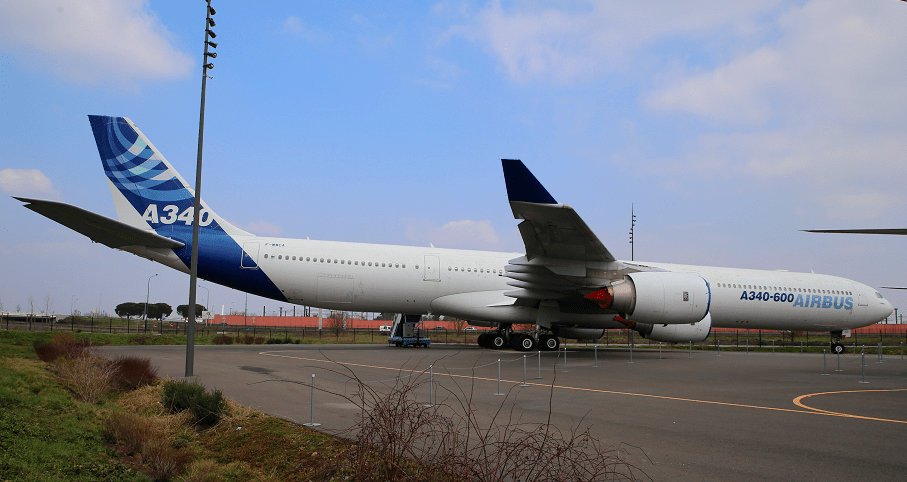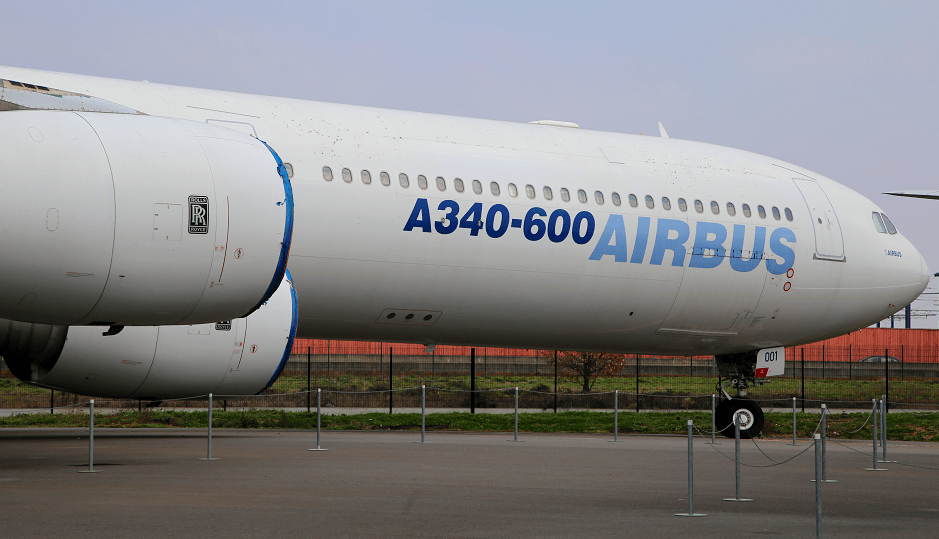Airbus A340-600 (F-WWCA): wide-body jet airliner
When Airbus designed the Airbus A300 during the 1970s it envisioned a broad family of airliners to compete against Boeing and McDonnell Douglas, two established US aerospace manufacturers. From the moment of formation, Airbus had begun studies into derivatives of the Airbus A300B in support of this long-term goal.
Prior to the service introduction of the first Airbus airliners, Airbus had identified nine possible variations of the A300 known as A300B1 to B9. A tenth variation, conceived in 1973, later the first to be constructed, was designated the A300B10. It was a smaller aircraft that would be developed into the long-range Airbus A310.
Airbus then focused its efforts on the single-aisle market, which resulted in the Airbus A320 family, which was the first digital fly-by-wire commercial aircraft. The decision to work on the A320, instead of a four-engine aircraft proposed by the Germans, created divisions within Airbus.
Prototype made in Toulouse (France)
First flight: 1991
Production: 380
Crew: 2 persons
Capacity: 370 passengers
Engine: Rolls-Royce Trent 500
Speed: 900 km/h
Range: 14000 km
Ceiling: 12364 m (41,450 ft)
The Airbus A340 is a long-range, wide-body passenger airliner that was developed and produced by Airbus. In the mid-1970s, Airbus conceived several derivatives of the A300, its first airliner, and developed the A340 quadjet in parallel with the A330 twinjet. In June 1987, Airbus launched both designs with their first orders and the A340-300 took its maiden flight on 25 October 1991. It was certified along with the A340-200 on 22 December 1992 and both versions entered service in March 1993 with launch customers Lufthansa and Air France. The larger A340-500/600 were launched on 8 December 1997; the A340-600 flew for the first time on 23 April 2001 and entered service on 1 August 2002.
Keeping the eight-abreast economy cross-section of the A300, the early A340-200/300 has a similar airframe to the A330. Differences include four 151 kN (34,000 lbf) CFM56s instead of two high-thrust turbofans to bypass ETOPS restrictions on trans-oceanic routes, and a three-leg main landing gear instead of two for a heavier 276 t (608,000 lb) MTOW.
Both airliners have fly-by-wire controls, which was first introduced on the A320, as well as a similar glass cockpit. The later A340-500/600 have a larger wing and are powered by 275 kN (62,000 lbf) Rolls-Royce Trent 500 for a heavier 380 t (840,000 lb) MTOW.
The shortest A340-200 measured 59.4 m (195 ft), and with a 12,400 km range (6,700 nmi; 7,700 mi) with 210–250 seats in 3-class. The most common A340-300 reached 63.7 m (209 ft) to accommodate 250–290 passengers and could cover 13,500 km (7,300 nmi; 8,400 mi). The A340-500 was 67.9 m (223 ft) long to seat 270–310 over 16,670 km (9,000 nmi; 10,360 mi), the longest-range airliner at the time. The longest A340-600 was stretched to 75.4 m (247 ft), then the longest airliner, to accommodate 320–370 passengers over 14,450 km (7,800 nmi; 8,980 mi).
As improving engine reliability allowed ETOPS operations for almost all routes, more economical twinjets have replaced quadjets on many routes. On 10 November 2011, Airbus announced that the production reached its end, after 380 orders had been placed and 377 delivered from Toulouse, France. The A350 is its successor; the McDonnell Douglas MD-11 and the Boeing 777 were its main competitors. By the end of 2021, the global A340 fleet had completed more than 2.5 million flights over 20 million block hours and carried over 600 million passengers with no fatalities. As of March 2023, there were 203 A340 aircraft in service with 45 operators worldwide. Lufthansa is the largest A340 operator with 27 aircraft in its fleet.














